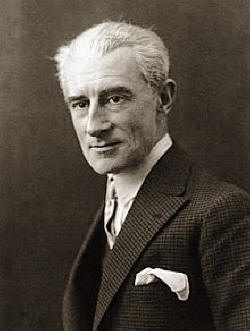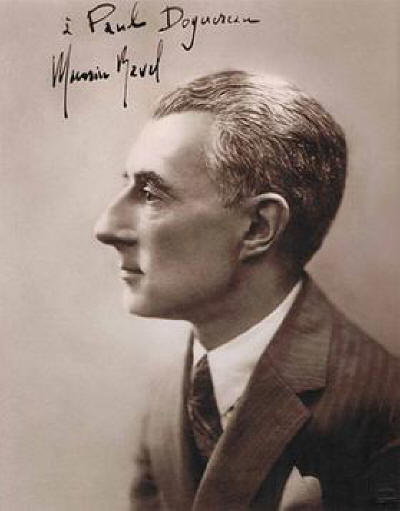

Queer Places:
Cimetiere de Levallois-Perret Levallois-Perret, Departement des Hauts-de-Seine, Île-de-France, France, Plot Division 16
 Joseph Maurice Ravel (7 March 1875 – 28 December 1937) was a French
composer, pianist and conductor. In “Discoveries,” Robert Craft, the
Igor Stravinsky’s longtime
friend and assistant, writes, “Ravel and Stravinsky were, of all artists, the
most successful in concealing their sexuality. The two were time-to-time
lovers....”
Joseph Maurice Ravel (7 March 1875 – 28 December 1937) was a French
composer, pianist and conductor. In “Discoveries,” Robert Craft, the
Igor Stravinsky’s longtime
friend and assistant, writes, “Ravel and Stravinsky were, of all artists, the
most successful in concealing their sexuality. The two were time-to-time
lovers....”
Ravel is often associated with impressionism along with his elder contemporary Claude Debussy, although both composers rejected the term. In the 1920s and 1930s Ravel was internationally regarded as France's greatest living composer.
Born to a music-loving family, Ravel attended France's premier music college, the Paris Conservatoire; he was not well regarded by its conservative establishment, whose biased treatment of him caused a scandal. After leaving the Conservatoire, Ravel found his own way as a composer, developing a style of great clarity, incorporating elements of baroque, neoclassicism and, in his later works, jazz. He liked to experiment with musical form, as in his best-known work, Boléro (1928), in which repetition takes the place of development. He made some orchestral arrangements of other composers' music, of which his 1922 version of Mussorgsky's Pictures at an Exhibition is the best known.
As a slow and painstaking worker, Ravel composed fewer pieces than did many of his contemporaries. Among his works to enter the repertoire are pieces for piano, chamber music, two piano concertos, ballet music, two operas (each less than an hour long), and eight song cycles; he wrote no symphonies and only one religious work ("Kaddish" [1]). Many of his works exist in two versions: first, a piano score and later an orchestration. Some of his piano music, such as Gaspard de la nuit (1908), is exceptionally difficult to play, and his complex orchestral works such as Daphnis et Chloé (1912) require skilful balance in performance.

Maurice Ravel photograph inscribed to Paul Doguereau
Ravel was among the first composers to recognise the potential of recording to bring their music to a wider public. From the 1920s, despite limited technique as a pianist or conductor, he took part in recordings of several of his works; others were made under his supervision.
Vaughan Williams's recollections throw some light on Ravel's private life, about which the latter's reserved and secretive personality has led to much speculation. Vaughan Williams, Rosenthal and Marguerite Long have all recorded that Ravel frequented brothels.[79] Long attributed this to his self-consciousness about his diminutive stature, and consequent lack of confidence with women.[73] By other accounts, none of them first-hand, Ravel was in love with Misia Edwards,[69] or wanted to marry the violinist Hélène Jourdan-Morhange.[80] Rosenthal records and discounts contemporary speculation that Ravel, a lifelong bachelor, may have been homosexual.[81] Such speculation recurred in a 2000 life of Ravel by Benjamin Ivry;[82] subsequent studies have concluded that Ravel's sexuality and personal life remain a mystery.[83]
My published books: